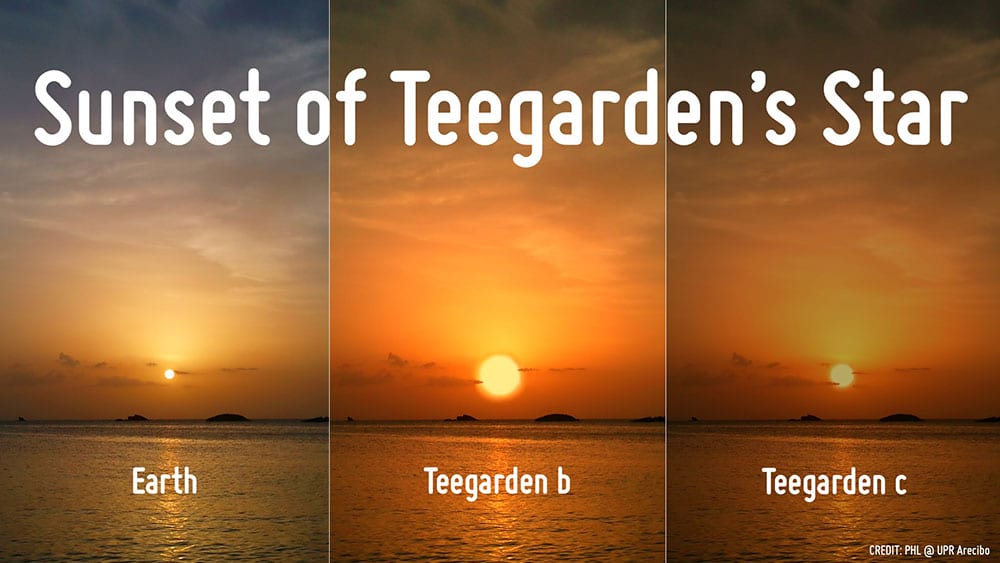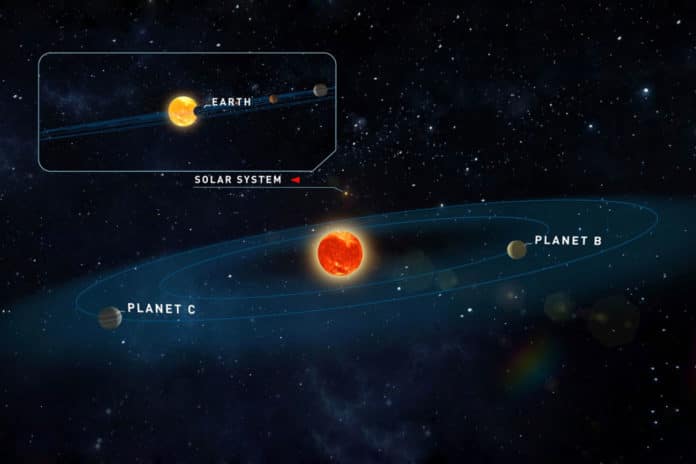An international research team led by the University of Göttingen has discovered two Earth-like planets in our cosmic backyard, and both appear so similar to our own. They are now among the top 19 known exoplanets with potentially habitable environments.
The planets orbit a sun known as “Teegarden’s star,” which is only about 12.5 light-years – the distance that light travels in a year, or roughly 6 million miles or 10 trillion kilometers – away from Earth. Thus, they are one of the smallest stars existing. It is only about 2700 °C warm and about ten times lighter than the sun.
“The two planets resemble the inner planets of our solar system,” explains lead author Mathias Zechmeister of the Institute for Astrophysics at the University of Göttingen. “They are only slightly heavier than Earth and are located in the so-called habitable zone, where water can be present in liquid form.”
It is the 24th closest star to the Sun. Researchers observed it as a part of the larger CARMENES (Calar Alto high-Resolution search for M dwarfs with Exoearths with Near-infrared and optical Échelle Spectrographs) search exoplanets.
Though it is so close to us, the star was only discovered back in 2003. So the scientists observed the star for about three years. And their data clearly shows the existence of two planets, now denominated as Teegarden b and Teegarden c.

The project’s observation suggests that the newly found worlds orbit their parent star with periods of roughly 4.9 Earth days and 11.4 days, respectively. To ensure that the amount of radial velocity showing these planets is not defective in the star’s brightness, the researchers complemented their observations with photometric (light measurement) data gathered about Teegarden’s Star.
Teegarden b is the innermost planet with a 60 percent chance of having a temperate surface environment, between 0° to 50°C, apparently closer to 28°C. On the other hand, Teegarden c sits farther out and has a surface temperature more like Mars, sitting at roughly -47°C, according to the international research team.
In the study, Teegarden b scored a 0.94 on what’s called the “Earth Similarity Index,” where a 1.0 would indicate a perfect Earth replica.
“The planets Teegarden’s Star b and c are the first planets detected with the radial velocity method around such an ultra-cool dwarf,” the team says. “Both planets have a minimum mass close to one Earth mass, and given a rocky, partially iron, or water composition; they are expected to have Earth-like radii.“
The astronomers suspect that the two planets could be part of a larger system. “Many stars are apparently surrounded by systems with several planets,” explains co-author Professor Stefan Dreizler of the University of Göttingen. Teegarden’s star is the smallest star where researchers have so far been able to measure the weight of a planet directly.
“This is a great success for the Carmenes project, which was specifically designed to search for planets around the lightest stars,” says Professor Ansgar Reiners of the University of Göttingen, one of the scientific directors of the project.
As the nearest fourth with potentially habitable planets, Teegarden is an excellent candidate for future research, and its potential to harbor life has left us quite excited.
The research was published in Astronomy & Astrophysics.
